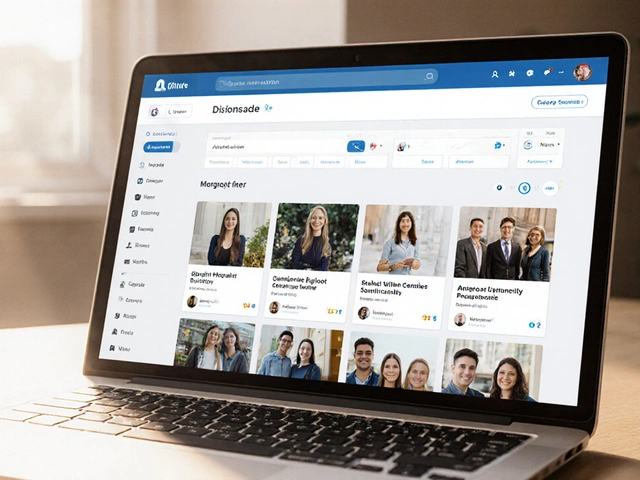
Picture this: it’s 2025, and LinkedIn is packed with more people listing “MBA” next to their name than ever before. The degree that once opened nearly any boardroom door now feels like a crowded badge. Tuition costs are skyrocketing, AI is shaking up the business world, and startup founders without formal training are getting investors to throw millions their way. So, what’s really going on? Is the classic MBA still the golden ticket, or has its shine faded in today’s job market?
The Ups and Downs of MBA Value Over Time
The MBA started out as a secret handshake into the world’s most powerful corporations—think Wall Street, Fortune 500, Silicon Valley hotshots. In the 1990s and early 2000s, the letters “MBA” all but guaranteed a fast-track to high-paying jobs. If you flashback to 2005, folks fresh out of Harvard, Stanford, or INSEAD had recruiters lining up with six-figure offers. Back then, an MBA felt like an elevator to the penthouse suit, especially if it came stamped by a top global business school.
Fast-forward to 2025 and things look…different. The number of MBA programs has ballooned worldwide. According to the Association to Advance Collegiate Schools of Business, global MBA enrollments doubled between 2010 and 2022. While top-tier schools still hold hefty prestige, thousands of regional and online programs have made the MBA title commonplace. Now it’s not unusual for a middle manager at a tech firm in Austin or a consultant in Bangalore to have an MBA.
Here’s the catch: with more MBAs in circulation, standing out is tricky. Employers in 2025 say they care just as much about hands-on digital skills, entrepreneurial spirit, or data science know-how as traditional business credentials. Big players like Google and Apple now hire for “problem-solvers” over just business school grads. Let’s not forget the mountain of student debt—U.S. News and World Report pegged the average cost of a top U.S. MBA at over $220,000 in 2024, and that’s not counting lost income from quitting your job for two years. Still, some folks claim the brand-name MBA is the only way to break into certain industries. So where does that leave us?
Costs, Debt, and the Money Question
Ask anybody considering an MBA this year what keeps them up at night, and you’ll probably hear about tuition fees first. It’s not cheap: Stanford’s two-year program, for example, tips the scale at $260,000 including living expenses. While some public universities come in lower, the average price tag for a full-time program in the U.S. is about $120,000–$150,000, per the Graduate Management Admission Council (GMAC) 2024 report. That’s before counting interest on loans, living costs, and the salary you give up while studying.
Is the payoff worth it? Here’s where things get interesting. The GMAC survey from March 2025 showed median starting base salaries for MBA grads in the U.S. at $135,000—up only 2% from 2022, lagging behind inflation. MBAs from “elite” schools still pull $170,000 or more, but those from lesser-known programs often start closer to $90,000. That means it could take 7–10 years to break even, longer if you factor in compound interest on loans. Compare this to tech specialists or engineers, who can clear six figures with just a bachelor’s degree, and you get why many people double-clutch at taking out an MBA-sized loan.
Let’s lay out the numbers:
| School Type | Median Salary (2025) | Average Cost | Time to Break Even |
|---|---|---|---|
| Top 10 US MBA | $170,000 | $220,000 | 5–7 years |
| US Public MBA | $100,000 | $110,000 | 8–12 years |
| Online MBA | $90,000 | $60,000 | 7–10 years |
Now, there are scholarships, part-time programs, and employer sponsorships that can soften the blow. Still, the pressure to pay off this investment fast is real. If you’re eyeing a leadership role in banking, consulting, or Fortune 100 management, a traditional MBA might still make sense. But for product managers, analysts, or startup founders, things get murky. The equation isn’t as automatic as it once was.

Changing Paths: New Skills, New Demands
Five years ago, businesses wanted classic MBA skills: strategy, operations, marketing, and finance chops. Fast-forward to now, and the wish list runs longer: digital transformation, data analysis, AI basics, product management, and even coding. Companies in 2025 are desperate for people who can wrangle big data and make sense of automation, not just lead slide decks on market share.
The MBA curriculum has had to hustle to keep up. About 60% of programs have rolled out tracks in analytics, fintech, or sustainable business since 2021. Top schools like MIT Sloan, Wharton, and LBS offer “STEM MBAs” focused on combining business savvy with tech fluency. But not every program keeps pace, and a lot of grads find themselves needing extra certificates or bootcamps to land the hottest jobs. A survey by LinkedIn Learning in 2025 noted that recruiters valued hybrid backgrounds—the combo of business plus something niche—much more than a vanilla MBA. That’s great news if you can code Python or run digital ad campaigns, but tough if you’ve only racked up classic case study experience.
Even in traditional fields like finance and consulting, recruiters have dialed up their expectations. They’re sniffing out signs that candidates can adapt to AI-driven workflows, lead remote teams, or drive ESG (environmental, social, governance) growth—not just crunch numbers. And if you’ve spent time in startups or emerging markets, employers are keen. It’s not only about the degree. It’s about how you use it.
The Brand Game: Does Prestige Still Matter?
Let’s get practical: does having “Harvard” or “INSEAD” on your CV still open doors? The short answer is yes—at least at the top end. According to a Financial Times report from January 2025, graduates of the M7 elite U.S. schools (Harvard, Stanford, Wharton, Booth, Columbia, Kellogg, MIT Sloan) landed almost twice as many C-suite interviews compared to those from second-tier schools. A handful of European and Asian MBAs—like LBS, HEC Paris, or CEIBS—still turn heads in international circles.
But the playing field is leveling. Employers care just as much about what you did before and during the MBA as the school name. Run your own business? Launch a new product? Lead a team through a digital transformation? That action matters more than sitting through classes. Even recruiters at McKinsey and Google now say “story over pedigree”—they want to know what you’ve built, not just where you studied.
Here’s a nugget: in a 2025 survey of Fortune 500 CEOs, less than 40% now hold an MBA. Among rising tech founders and product leads, that percentage drops to 18%. With business moves and pivots happening at lightning speed, it makes sense. Companies want flexible, creative thinkers who can solve problems on their feet, regardless of where (or if) they got their degree.

Is There a Better Way? MBA Alternatives and the Future
The best-kept secret in modern business is the range of fresh alternatives to a traditional MBA. Want to pivot into data analytics? Nine-month bootcamps from places like General Assembly or Coursera can get you in the door—often for under $10,000. Hoping to score a product management job? Top tech companies now train their own with in-house “mini-MBAs” and certificate programs. Harvard’s famous CORe online program takes just 10 weeks and costs $2,500, letting you learn the fundamentals without uprooting your life.
If your plan is to climb the ladder at your current company, many global corporations run sponsored leadership programs. Some offer tuition help for part-time or executive MBAs. Remote learning has also exploded. In 2023, more than 30% of MBA degrees in the U.S. were earned online—and early studies show employers trust many of these programs nearly as much as traditional classroom ones (if the school’s got a good reputation).
Maybe the real story is that “business school” no longer means just one thing. People are stacking skills from micro-courses, industry certifications, side hustles, and yes, sometimes MBAs. The career track isn’t a straight line anymore, and that’s freeing—if risky. The savvy move? Dig into job listings you want and see what gets people hired now, not five years ago. Then, build a plan that mixes old-school knowledge, real-world experience, and fast, digital skills.
So, is the MBA value fading? Maybe just shifting. If you’re after a specific industry jump—or want access to a network that only a top school can give—it still makes sense. But if six-figure debt makes your blood run cold, there are more flexible, affordable, and even faster options. The bottom line? The MBA isn’t dead, but it’s definitely not one-size-fits-all anymore. Welcome to the era of custom careers—choose your own adventure, and build it, step by step.




